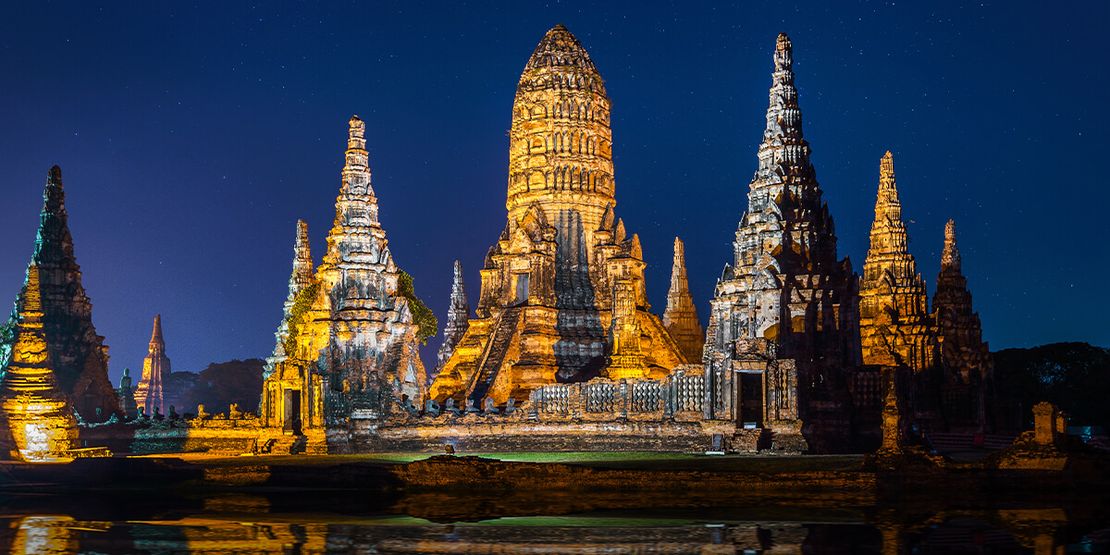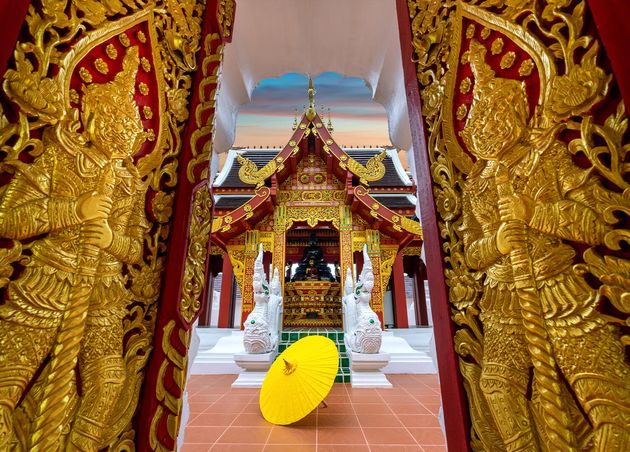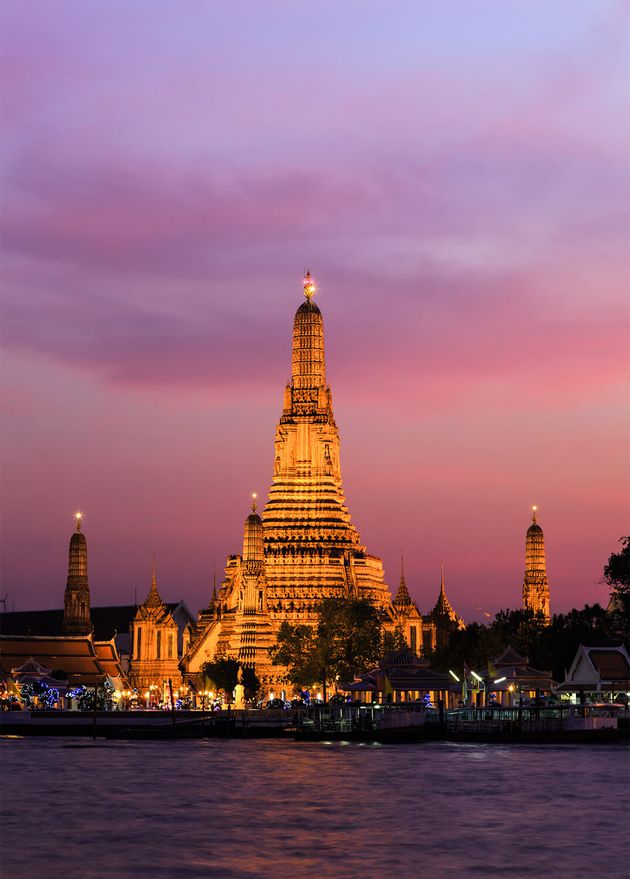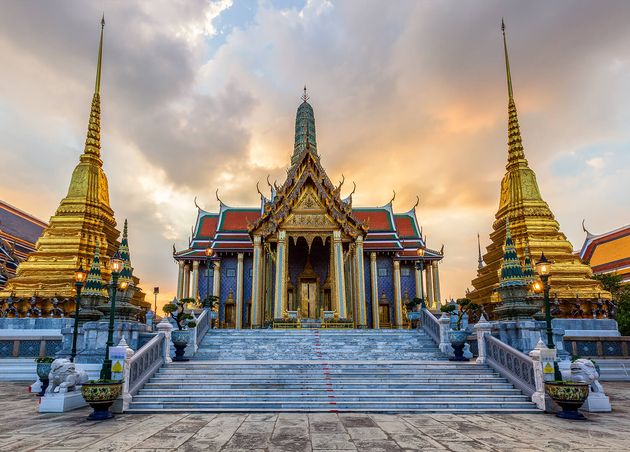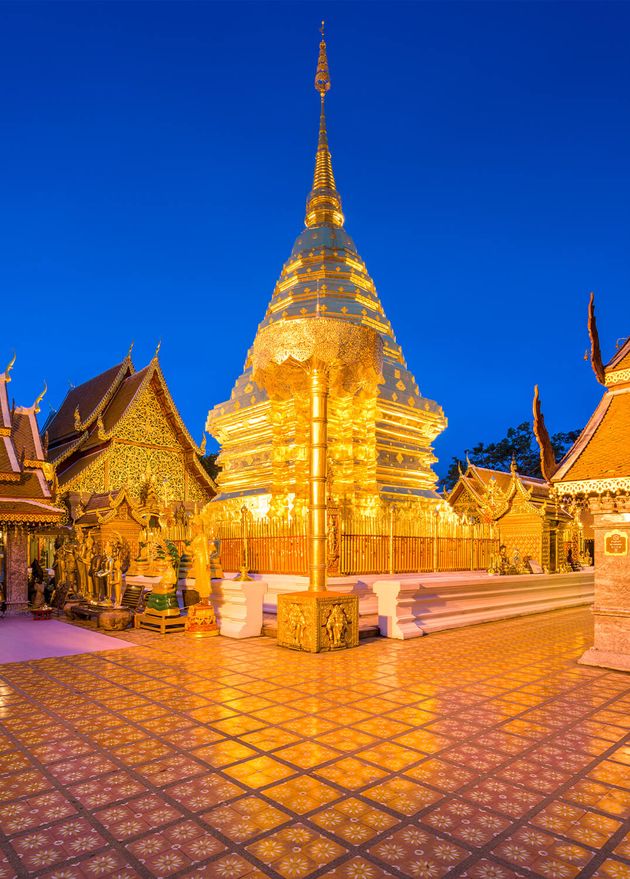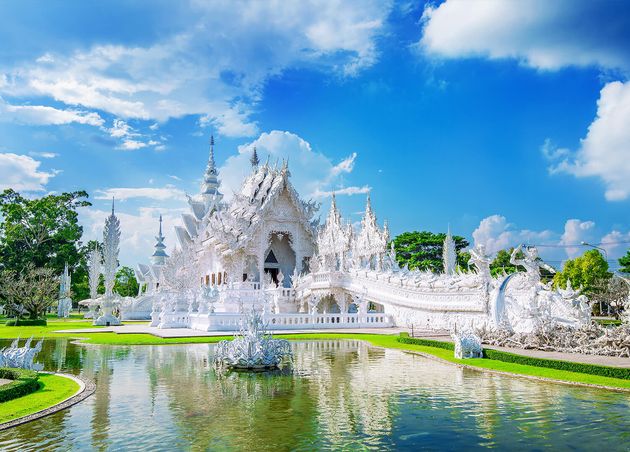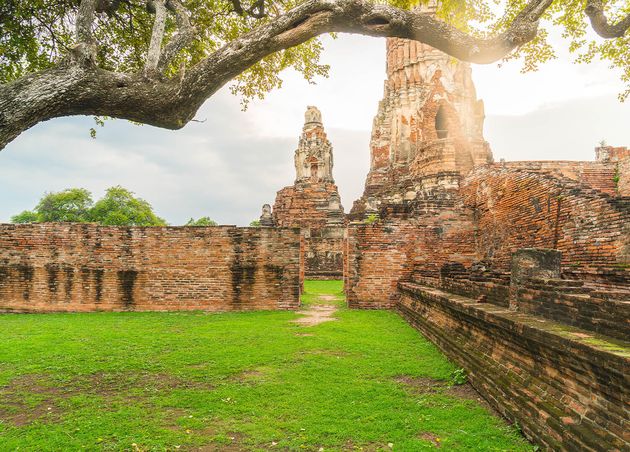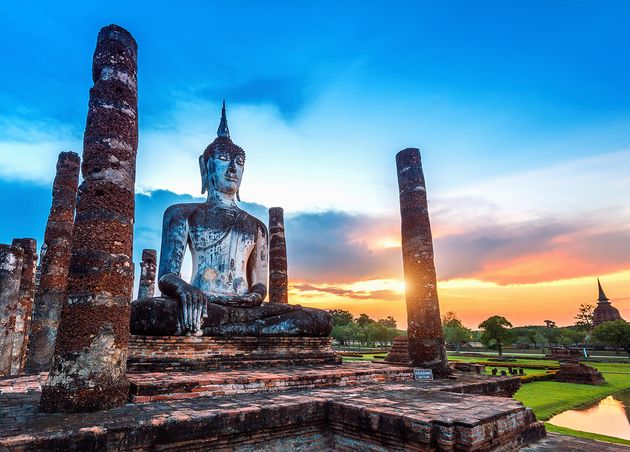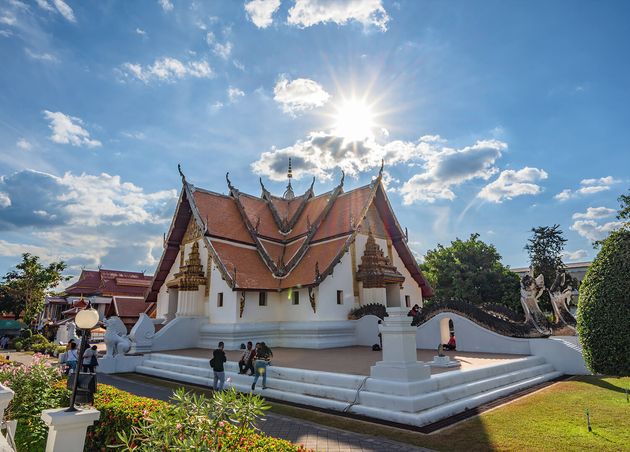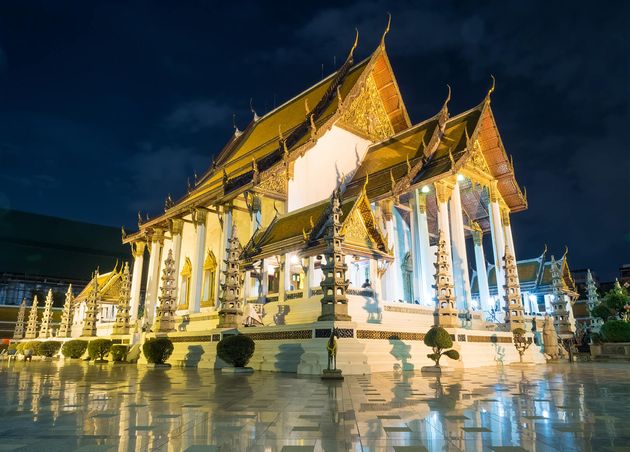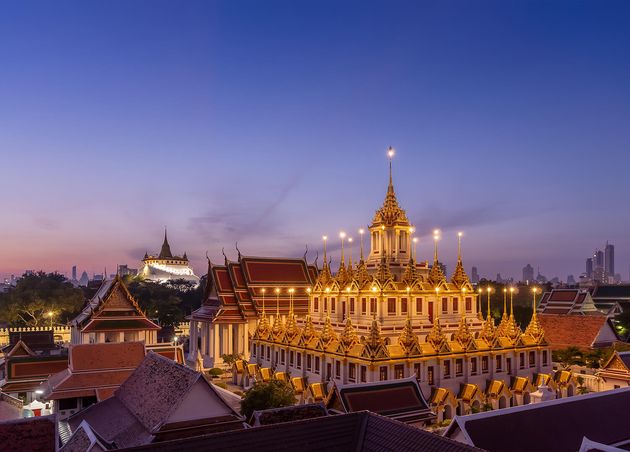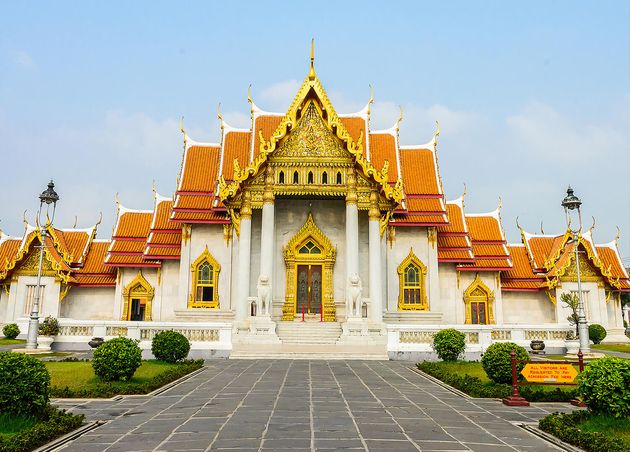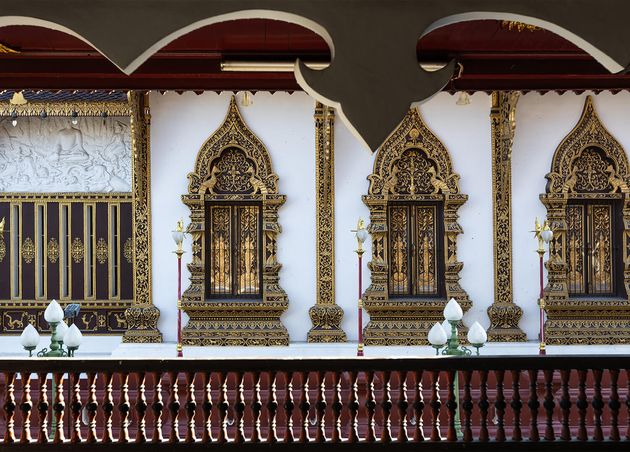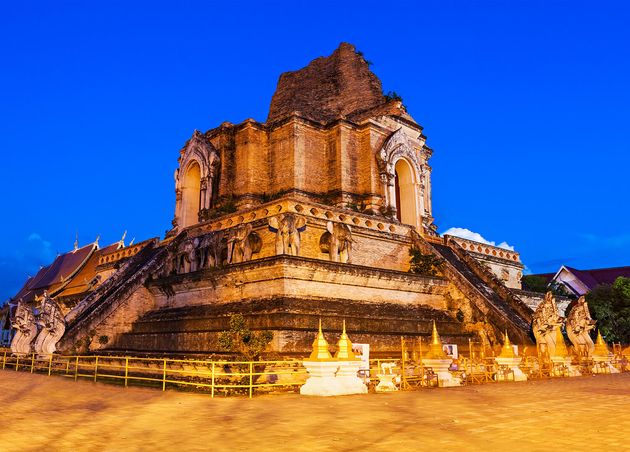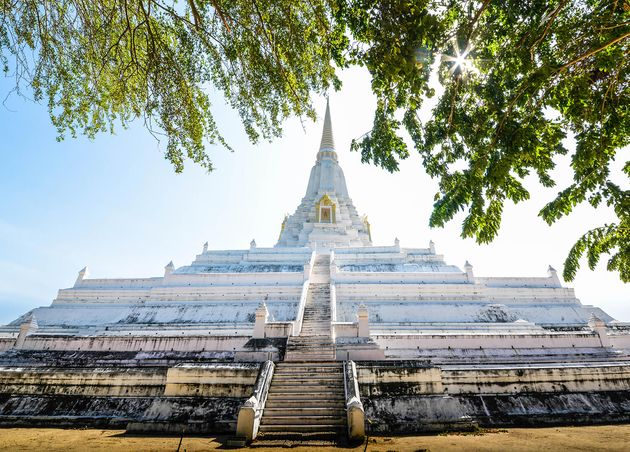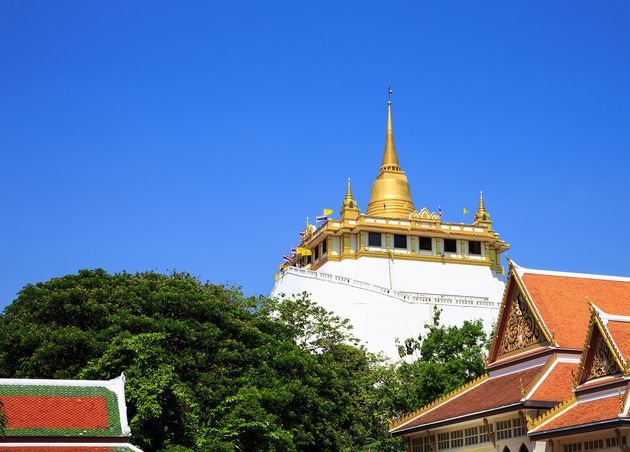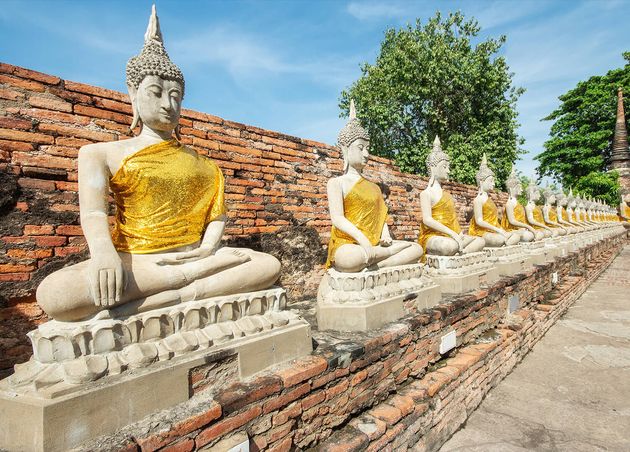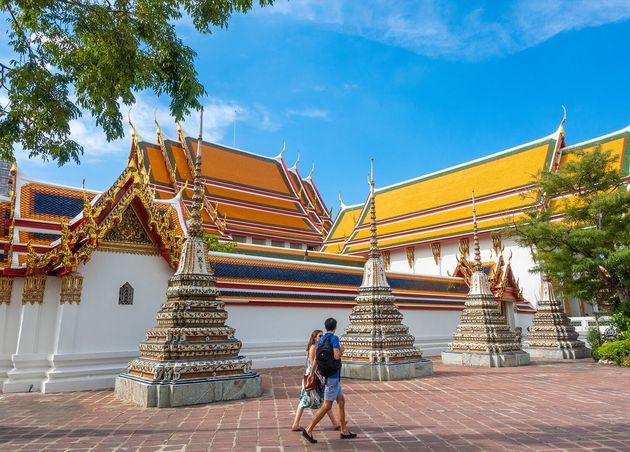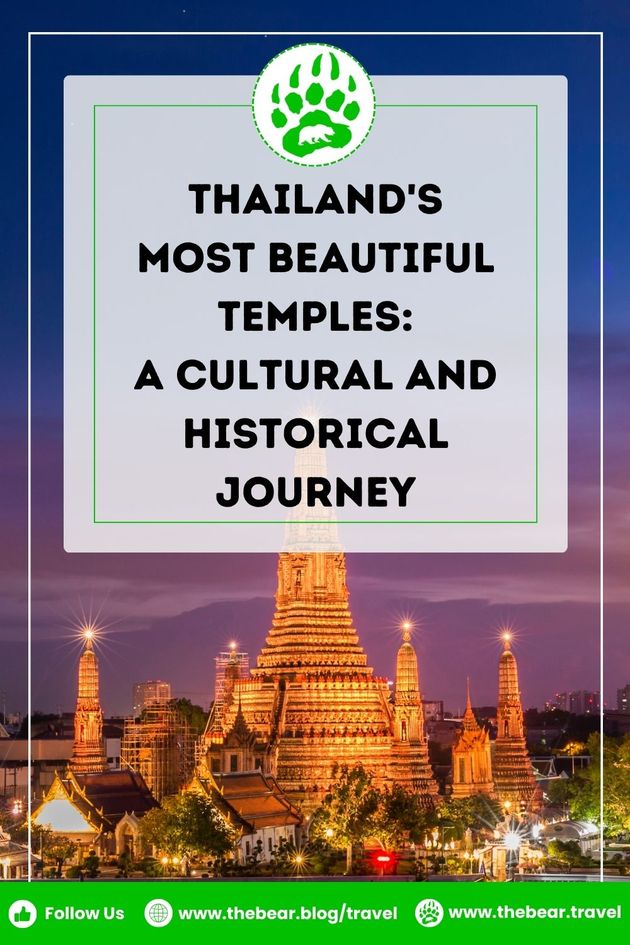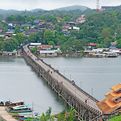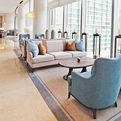Thailand's Most Beautiful Temples: A Cultural and Historical Journey
Thailand has a large number of temples. These temples, or "Wats," are important to Thai culture and history. They range from the shiny gold buildings in Krung Thep Maha Nakhon (Bangkok) to the old ruins in Ayutthaya. They are essential to Thailand's spiritual, cultural, and building past. They show visitors and Thai people the country's long history and strong Buddhist customs.
In Thailand, each temple has its past, often lasting hundreds of years. They were built at different times in the Kingdom's history, and their architectural style shows which family was in power. There is also a lot of spiritual meaning in these buildings. The complicated patterns and statues you see are representations of Buddhist teachings and Thai culture. Being in these temples is not only relaxing, but it also helps you learn more about Thailand's culture.
The Significance of Thai Temples
In Thailand, 95% of the people say they are Buddhist, making it the country's official religion. Because of this, Thai people attach a lot of spiritual importance to temples. They are places where religious activities like prayer and meditation happen and hold important events and holidays all year.
Aside from their moral importance, these buildings are also very important to Thailand's businesses. They bring in many people from inside and outside the country who help the tourism business. Some buildings are UNESCO World Heritage Sites, which are important cultural sites.
The Must-Visit Temples in Thailand
More than 40,000 temples are in the country, so choosing which ones to see can take time. These are some of Thailand's most famous temples that you should not miss:
- Wat Arun Ratchawararam Ratchawaramahawihan
- Wat Phra Kaew
- Wat Phra That Doi Suthep
- Wat Rong Khun
- Ayutthaya Historical Park
- Wat Phra Singh
- Wat Chaiwatthanaram
- Wat Phumin
- Wat Mahathat
- Wat Suthat
- Wat Ratchanadda
- Wat Benchamabophit
- Wat Saen Mueang Ma Luang
- Wat Chedi Luang
- Wat Phu Khao Thong
Start your amazing trip through Thailand's beautiful temples. Each shows how the country's culture, history, and Buddhist practices are deeply rooted. Explore these fantastic places to get to the heart of Thailand's history.
#1 Wat Arun
Wat Arun Ratchawararam Ratchawaramahawihan, also known as Wat Arun (Temple of Dawn), is on the west shore of the Chao Phraya River. It is famous for its beautiful Khmer-style tower covered in mosaic artwork and bright Chinese porcelain pieces. The temple's history is deeply connected to the troubled time when the Burmese attacked Ayutthaya, which used to be the city of Siam.
The best time to see this temple is at sunset when the golden sunrays shine on the front of the building and give it a magical glow.
#2 Wat Phra Kaew
Wat Phra Kaew is one of the holy temples in Thailand. It is also called the Temple of the Emerald Buddha. The temple was built in 1782 when King Rama I was in power. He started the Chakri Dynasty and made Bangkok the new city.
It has a beautiful building with detailed designs on the walls and roofs, and it is home to a small but significant figure of the Emerald Buddha.
#3 Wat Phra That Doi Suthep
In Chiang Mai, Wat Phra That Doi Suthep is on top of the Doi Suthep mountain. It was built in the 14th century. The temple site is said to have been chosen by a holy treasure with miraculous powers.
Over the years, it has become an important religious site known for its giant golden stupa and stunning views of Chiang Mai.
#4 Wat Rong Khun
Wat Rong Khun in Chiang Rai is a modern building wonder that is often just called the "White Temple." The Thai artist Chalermchai Kositpipat started building the temple in 1997. It is a masterpiece-in-the-making that combines traditional religious symbols with modern art and references worldwide.
It's a visual representation of Buddhist lessons because of its complicated white and silver pattern, which stands for cleanliness and knowledge.
#5 Ayutthaya Historical Park
The Ayutthaya Historical Park is a huge collection of ruins, including many temples and houses. It is a UNESCO World Heritage Site. In 1991, UNESCO named Ayutthaya Historical Park a World Heritage Site. It is a moving memory of what was once one of the richest towns in the world from the 14th century to the 18th.
The park has the remains of temples, mansions, and statues that show how great the Ayutthaya country was before it was destroyed by the Burmese in 1767. It was once the capital of the Kingdom of Siam, and this place has a big place in Thailand's past.
#6 Wat Mahathat
Wat Mahathat is another well-known temple in Ayutthaya. King Borommarachathirat I built it in the 1400s, and it was the holy center of the Ayutthaya country. It used to hold a piece of Buddha's tooth. It is famous for the Buddha's head tangled in tree roots.
Also at this spot are other well-preserved buildings and items that give tourists a look into the country's history.
#7 Wat Phumin
Wat Phumin is a one-of-a-kind northern Thailand temple built in the 1600s. It has both Buddhist and Hindu elements. The temple was built in 1596 by King Chao Jettabutrabhrama.
It is famous for the four sitting Buddhas arranged back-to-back to represent the four directions. The 'Whispering Hall,' with its beautiful paintings of local legends, is the main draw.
#8 Wat Suthat
Wat Suthat Thepwararam Ratchaworamahawihan, also known as Wat Suthat, is one of the oldest in Krung Thep Maha Nakhon (Bangkok). It was built during the rule of King Rama I in the early 1800s and is famous for its beautiful design and the Giant Swing at its entrance.
It is a must-see for art and history buffs because of its beautiful design and well-preserved wall paintings. A 25-foot-tall Buddha statue, one of the biggest in Thailand, can be found in the temple.
#9 Wat Ratchanadda
Wat Ratchanatdaram Worawihan, or Wat Ratchanadda, is famous for its unique five-tiered metal structure with beautiful towers and many small details. It is also known as Loha Prasat.
Wat Ratchanadda was built in the early 1800s and is famous for its unique design. It has 37 white pagodas that represent the 37 ideals that lead to knowledge. It is also one of the few churches left with an ordination hall in the style of the Brahmans.
#10 Wat Benchamabophit
Wat Benchamabophit Dusitwanaram in Bangkok is known as the "Marble Temple" because of the beautiful white marble outside and the ornate inside. It was built in 1899 when King Chulalongkorn was in charge.
Carrara marble from Italy is a beautiful example of Bangkok's fancy style and signifies Thailand's openness to modernization. It has many Buddha statues, including a copper figure that is 700 years old and a famous tourist spot.
#11 Wat Saen Mueang Ma Luang
The Wat Saen Mueang Ma Luang (Wat Hua Khuang) is located in Chiang Rai. Since the temple was built in the 1400s, it has been an important religious and cultural place. It stands out because of the bright colors, detailed carvings, and features on the outside.
It also has beautiful views of the mountains nearby, which makes it a must-see for nature fans.
#12 Wat Chedi Luang
Wat Chedi Luang in Chiang Mai was built in the 1400s and is famous for its huge chedi. The temple was once the tallest building in the old Kingdom of Lanna.
An earthquake damaged some of it, but it is still an important historical site. It is a famous tourist spot because of its beautiful buildings and old artifacts.
#13 Wat Phu Khao Thong
Wat Phu Khao Thong is an old temple outside Ayutthaya with an interesting past. Legend has it that it was built on the spot where King Naresuan beat a Burmese prince in a fight.
The most impressive thing about the temple is its tall chedi, which has four huge Buddha images looking in different directions.
#14 Wat Saket
Wat Saket, also called "The Golden Mount," is an important temple in Bangkok's history. The history of Thai temples goes back as far as the country itself. The first temples were built in the 3rd century BC.
Over the years, these temples have seen many Thai governments come and go. They are quiet witnesses to the country's changing culture and architectural history. A man-made hill in front of the temple is topped with a shiny gold chedi, or tower, that holds a Buddha treasure. A climb to the top gives you a wide view of Bangkok's skyline.
#15 Wat Yai Chai Mongkhon
Wat Yai Chai Mongkhon is in the old city of Ayutthaya. King U-Thong built this temple in the 1400s so that monks returning from studying in Ceylon would have a place to stay.
The temple is famous for its tall chedi and Buddha statue that is lying down. It is also called the "Monastery of the Auspicious Victory" because it is linked to the history of King Naresuan's win over Burmese attackers.
Essential Tips for Exploring Thailand's Temples
As a foreign visitor, you must know the proper way to behave when visiting these sites. Here are some important rules to remember:
- Wear Something Modest
- People should be polite and cover their shoulders and legs when visiting a holy place. Don't wear clothes that are too tight or too revealing.
- People should be polite and cover their shoulders and legs when visiting a holy place. Don't wear clothes that are too tight or too revealing.
- Take Off Your Shoes
- Before entering the temple, take off your shoes. You might also have to take your socks off at some churches.
- Before entering the temple, take off your shoes. You might also have to take your socks off at some churches.
- Treat Temples with Respect
- They are places of worship, so be quiet and polite. Stay away from loud noises and annoying behavior.
- They are places of worship, so be quiet and polite. Stay away from loud noises and annoying behavior.
- Do Not Touch Holy Things
- Many buildings have shrines with holy things or pictures. People think touching or taking shots of these things without permission is rude.
A trip to Thailand is complete with experiencing its temples' spiritual beauty and physical greatness. Each Wat is full of stories from hundreds of years ago, ornate paintings, and carefully made figures that will teach you about the heart of Thai Buddhist culture. The peacefulness, attractiveness, and deep historical and cultural significance of these holy places make them very popular with tourists and people in the area.
Thailand's temples are more than just places of prayer; they tell stories about the country's history, spiritual beliefs, and creative architecture that span hundreds of years. Respectfully exploring these temples is a fun and educational experience that will teach you much about Thai culture and give you memories to keep forever. You will be amazed by Thailand's temples, whether you are interested in history, art, or spirituality. They are a reminder of the country's rich cultural tapestry.
Dr. Theodore (Professor Bear)
Hi! I'm Dr. Theodore Bennet (Professor Bear), your scholarly travel companion who brings history to life with immersive tours and expert guides. With a Ph.D. in History and years of travel writing experience, I offer authoritative insights for unforgettable journeys.
The Bear Travel | Experience like a Local
A fast-growing Thailand Travel Blog written by Expats and Thais since 2017. We will share our experiences and ideas from an insider point of view for you to create your own unique Thailand experience.
For the latest news and events about The Bear Travel, follow us on Facebook, Instagram, Twitter, Pinterest, or YouTube.
For any issues, concerns, or queries, don’t hesitate to CONTACT us.
Recommended for you
Using Rabbit Card in Bangkok: A Guide for Convenient Travel
Lifestyle Bear


